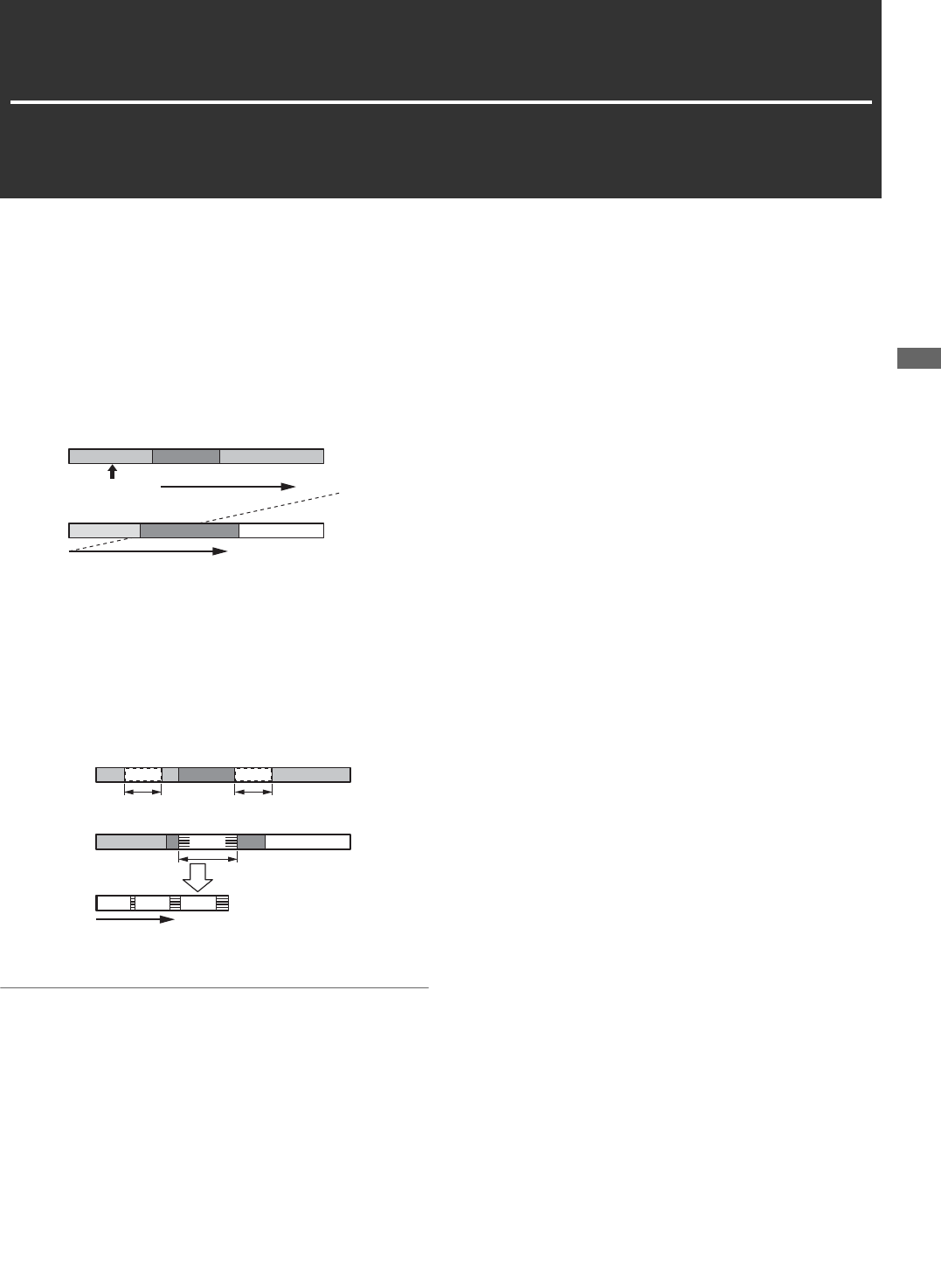
Using Play List: Play List Function
67
Using Play List
Using Play List
Play List Function
The play list function allows you to create lists (play lists) that
register clip sections recorded on P2 cards to continuously
play them back in list order. List editing is fast and efficient
since no actual data is involved.
In normal playback, playback starts from the starting point
and goes on until the last clip.
In a play list playback, the user first creates a play list that
defines the IN points (start position) and OUT points (end
position) of the clip segments that should be played. The
subsequent play list playback will play only the sections
specified on the play list as a single continuous section.
◆ NOTE:
•The play list function is accessed by opening the play list screen
(press the PLAY LIST button to turn it on).
•The play list is stored in the play list area of memory in this unit and
can always be accessed from the play list screen. Play list can also
be stored on a P2 card. To save the voice-over audio data to the
same P2 card as the play list, first save the play list to a P2 card.
• The processing activities entered on each line in the play list screen
to run the play list are called events.
•During play list playback, only formats set as edit formats can be
played and registered.
•Do not add a 24PN clip created in non-linear editing to a play list.
Editing points may not be registered correctly.
• The play list stores the playback volume set during audio overwriting
and uses this volume setting during playback. For this reason, the
sound volume cannot be adjusted during play list playback.
•Do not use and register multiple copies of a clip at the same time
since that may result in incorrect recognition.
Current position Continuous playbac
k
Continuous playback
Clip 1 Clip 2 Clip 3-1
Clip 3-2 Clip 4 Clip 5
P2
card 1
P2
card 2
Clip 1 Clip 2 Clip 3-1
Clip 3-2 Clip 4 Clip 5
Play list playback
Continuously played as specified
by the play list (When started from event A)
P2
card 1
P2
card 2
IN
OUT IN OUT
IN
OUT
Event C
Event CEvent BEvent A
Event B
Event A


















